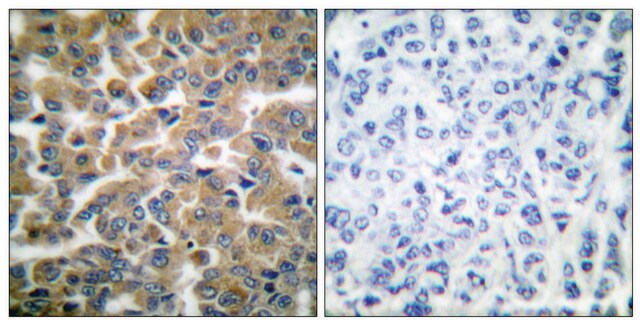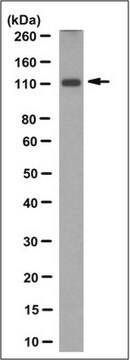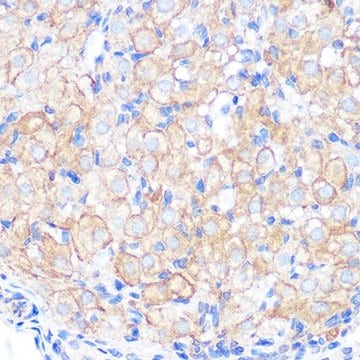ABS1582
Anti-phospho Glucocorticoid Receptor Antibody (Ser287)
from rabbit, purified by affinity chromatography
Synonym(s):
Glucocorticoid receptor, GR, Nuclear receptor subfamily 3 group C member 1
About This Item
Recommended Products
biological source
rabbit
Quality Level
antibody form
affinity isolated antibody
antibody product type
primary antibodies
clone
polyclonal
purified by
affinity chromatography
species reactivity
mouse, rat, human
technique(s)
ChIP: suitable
immunofluorescence: suitable
western blot: suitable
NCBI accession no.
UniProt accession no.
shipped in
ambient
target post-translational modification
phosphorylation (pSer287)
Gene Information
rat ... Nr3C1(24413)
General description
Specificity
Immunogen
Application
Chromatin Immunohistochemistry (ChIP) Analysis: A representative lot detected enhanced Ser287 phosphorylation of GR recruited to the SGK1 and GILZ regulatory regions upon dexamethasone treatment or BDNF/dexamethasone cotreatment of 293TrkB cells stably expressing wild-type rat GR (Lambert, W.M., et al. (2013). Mol. Cell. Biol. 33(18):3700-3714).
Immunofluorescence Analysis: A representative lot detection GR S287 phosphorylation in hypothalamic CRH-producing neurons by fluorescence immunohistochemistry staining of 4% paraformaldehyde-fixed free-floating mouse coronal sections. GR S287 phosphorylation decreased in brain tissue from BDNF+/ and TrkB TrkB+/ mice, increased upon inducible BDNF overexpression and decreased upon Cre-dependent excision in transgenic mice with floxed GR allele (Lambert, W.M., et al. (2013). Mol. Cell. Biol. 33(18):3700-3714).
Western Blotting Analysis: A representative lot detected BDNF-induced GR Ser287 phosphorylation in primary rat cortical neurons, PC12 cells expressing TrkB, and 293TrkB cells stably expressing wild-type rat GR, as well as upregulated GR Ser287 phosphorylation in mouse brain following dexamethasone injection or stress-induced elevation of endogenous glucocorticoids by forced swim (Lambert, W.M., et al. (2013). Mol. Cell. Biol. 33(18):3700-3714).
Quality
Western Blotting Analysis: 2.1 µg/mL of this antibody detected 100 nM dexamethasone/100 nM of H2O2 treatment-induced glucocorticoid receptor Ser287 phosphorylation in primary ear fibroblasts from wild-type, but GR S287A-knock-in mice.
Target description
Physical form
Other Notes
Not finding the right product?
Try our Product Selector Tool.
Storage Class Code
12 - Non Combustible Liquids
WGK
WGK 1
Certificates of Analysis (COA)
Search for Certificates of Analysis (COA) by entering the products Lot/Batch Number. Lot and Batch Numbers can be found on a product’s label following the words ‘Lot’ or ‘Batch’.
Already Own This Product?
Find documentation for the products that you have recently purchased in the Document Library.
Our team of scientists has experience in all areas of research including Life Science, Material Science, Chemical Synthesis, Chromatography, Analytical and many others.
Contact Technical Service








